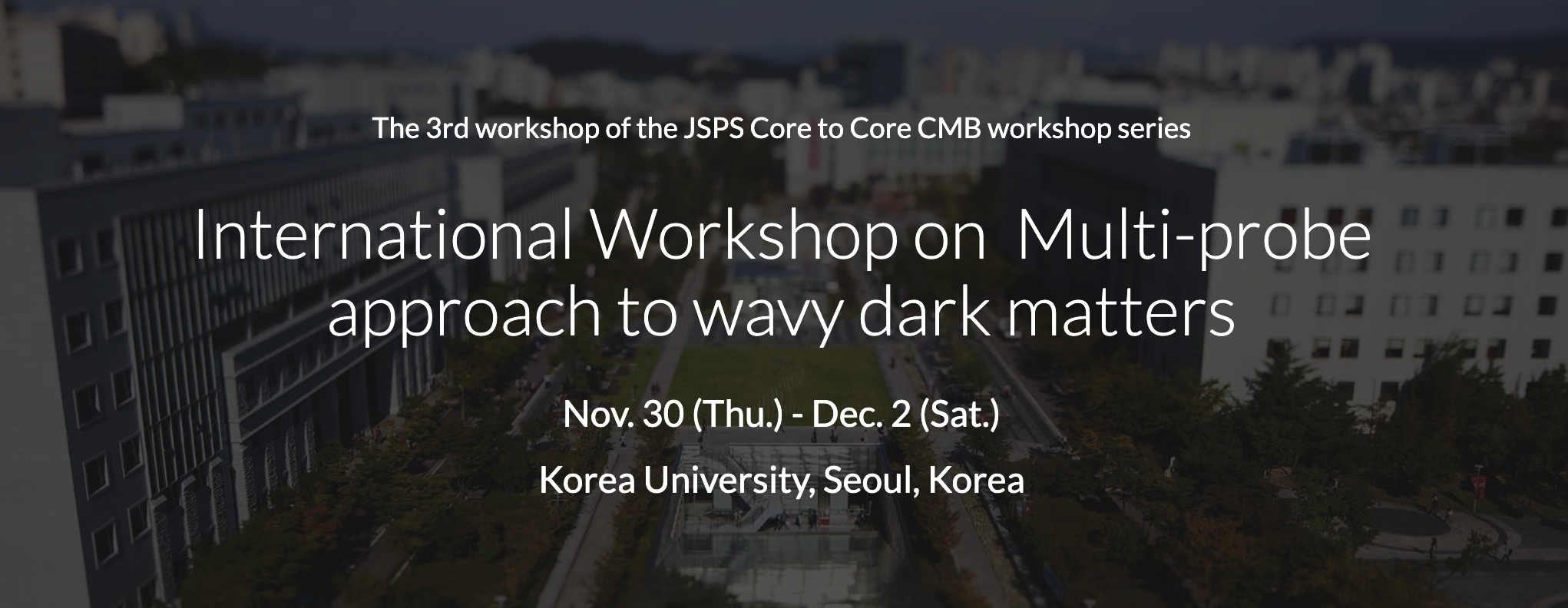Conveners
Cosmic probe
- Yuji Chinone (KEK/QUP)
Cosmic probe
- Patricia Diego-Palazuelos (Max Planck Institute for Astrophysics)
Cosmic probe
- Patricia Diego-Palazuelos (Max Planck Institute for Astrophysics)
We study the kinetic mixing between the cosmic microwave background (CMB) photon and the birefringent dark photon as a source of cosmic birefringence. We show that indeed the birefringence of the dark photon propagates to the CMB photon, but the resulting birefringence may not be uniform over the sky. Moreover, our investigation sheds light on the essential role played by kinetic mixing in the...
I will discuss the impact of the polarization angle miscalibration on measurements of cosmic isotropic birefringence derived from multi-frequency data of cosmic microwave background polarization experiments.
When coupled to electromagnetism via a Chern-Simons interaction, axion-like particles produce a rotation of the plane of linear polarization of photons known as cosmic birefringence (CB). Recent measurements obtained from WMAP and Planck cosmic microwave background (CMB) polarization data hint at the existence of an isotropic CB angle of β≈0.3º. Although still under scrutiny for their...
The upcoming generation of cosmic microwave background experiments offers an exciting opportunity to study models of exotic dark matter and their clustering behaviors through studies of gravitational lensing at small angular scales (<~ arcmin). I will present the development and application of a novel estimator for quantifying the statistics of the cosmic background lensing field, and show...
Ultralight scalar boson of particle mass 10-22 ~ 10-21 eV/c2, motivated by Axion-Like Particle (ALP), is one of the dark matter candidates, so called UltraLight Dark Matter (ULDM). Its de'Brogile wavelength of ~O(1kpc) gives rise to the wave nature in our universe, governed by Schrodinger-Poisson Equation (SPE) in the nonrelativistic limit.
We focus on two...
The accretion of dark matter (DM) into astrophysical black holes slowly increases their mass. The rate of this mass accretion depends on the DM model and the model parameters. If this mass accretion effect can be measured accurately enough, it is possible to rule out some DM models, and, with the sufficient technology and the help of other DM constraints, possibly confirm one model. We propose...
We review the expected impact of high precision measurements of the B-Mode of CMB anisotropies onto the tensions in the Cosmological Concordance Model. We focus on the reconstruction of the expansion history through cosmological gravitational lensing of the CMB, and discuss the existing constraints on tensions from operating CMB B-Mode probes and the expected ones for the future network of...

